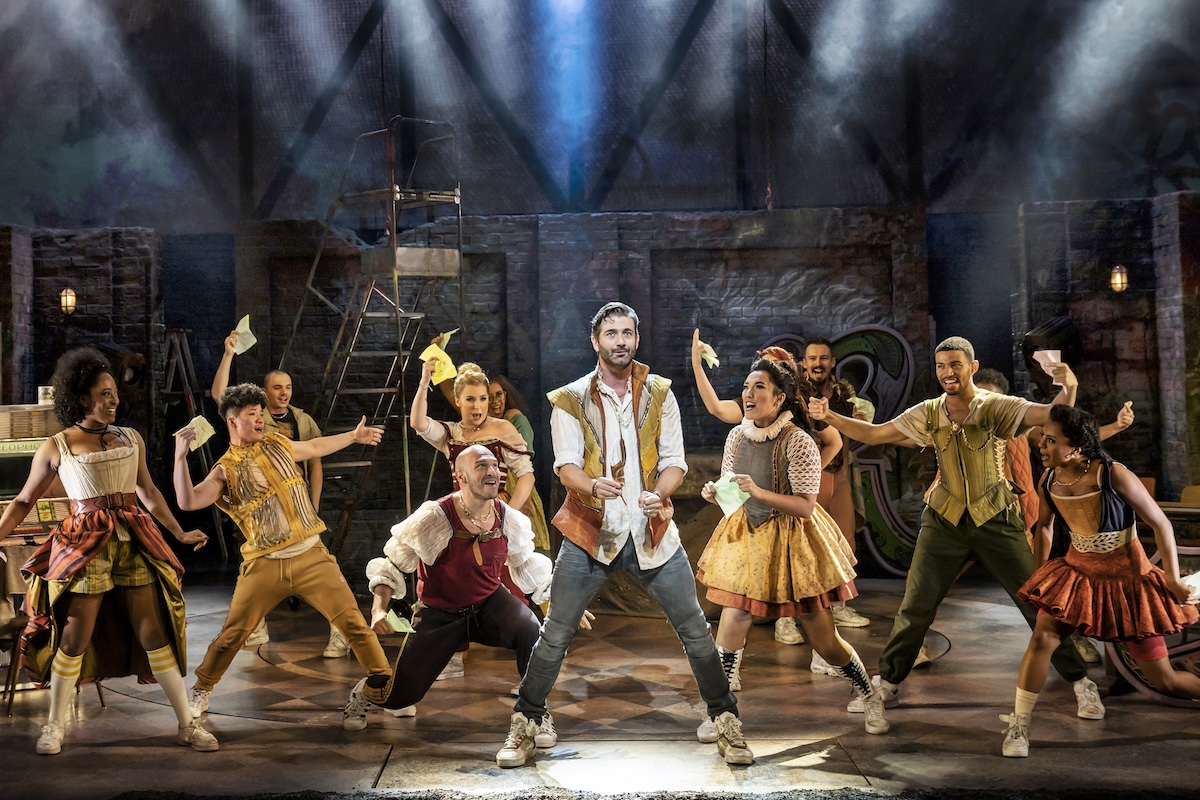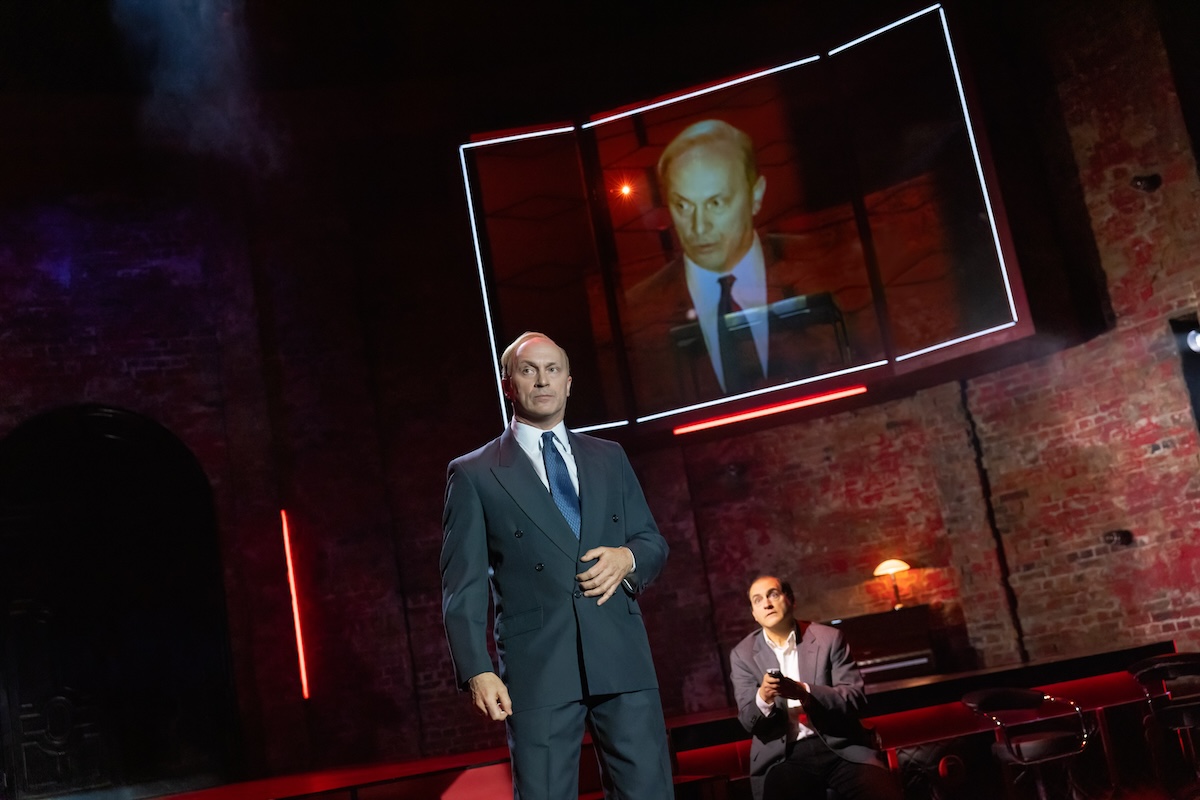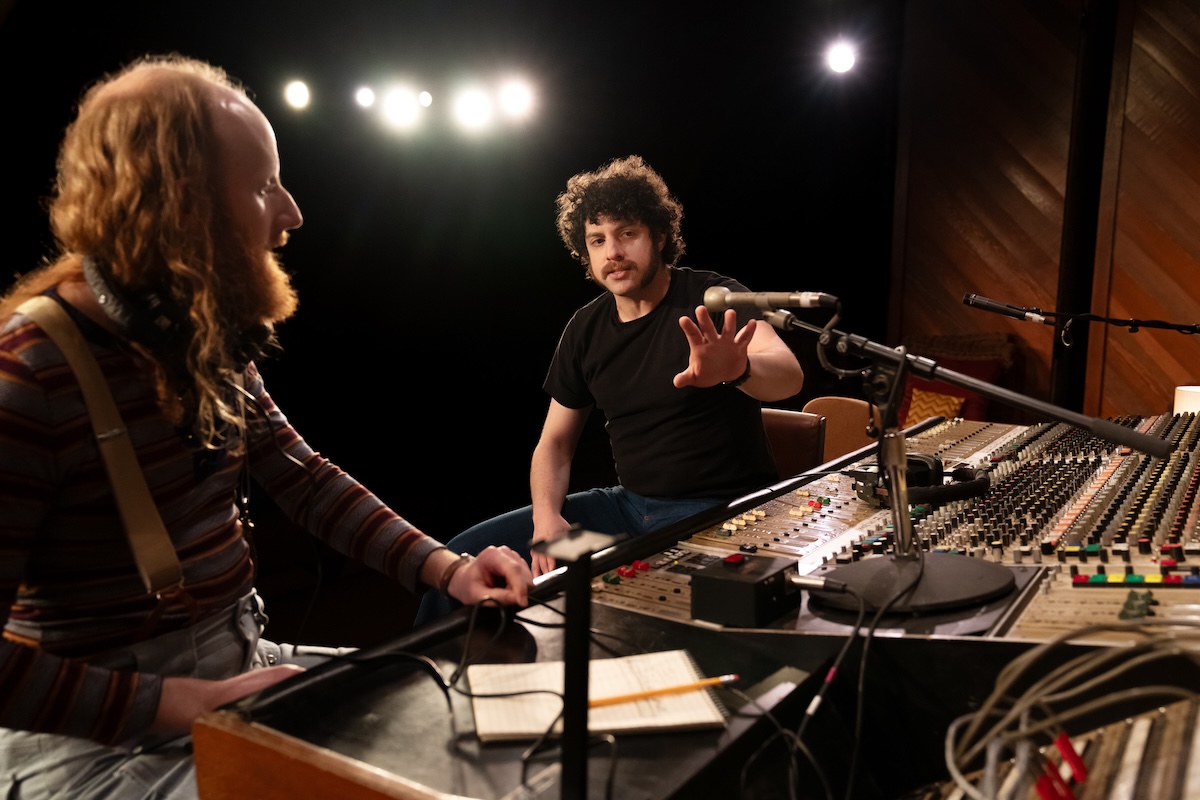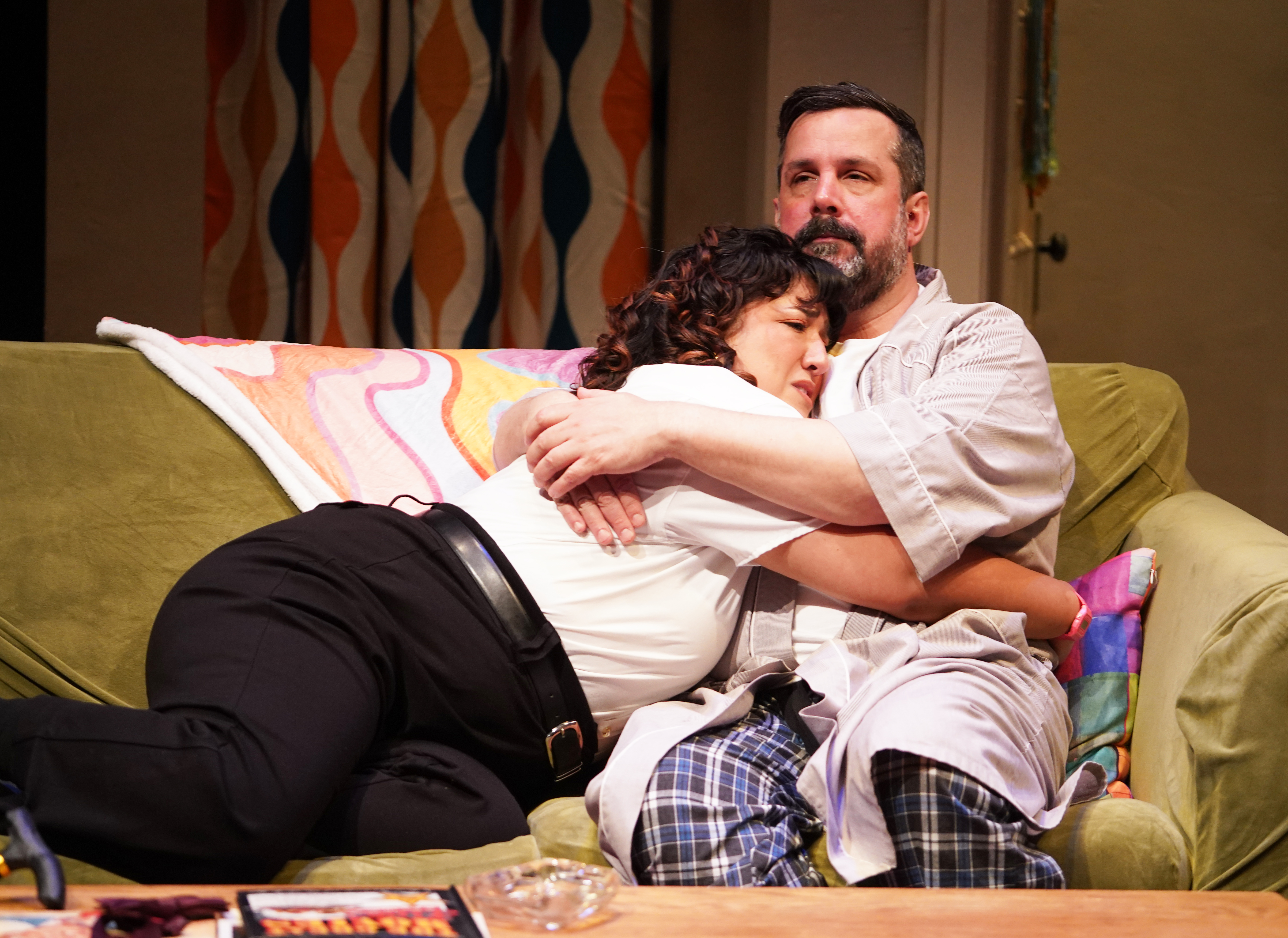Annie Get Your Gun

in Annie Get Your Gun
(© Keith Pattison)
The sexual politics of Annie Get Your Gun, written in 1946, don’t sit that easily with modern audiences, but it’s easy enough to overlook when you’re swept up in the glory of Irving Berlin’s music. What may not be so easily overlooked are some of the jarring design elements and vocal delivery in Richard Jones’ pared down, revisionist staging at the Young Vic. The production aims to be a playful reworking of a classic musical, but doesn’t quite have the strength of vision to pull it off.
Jones plays fast and loose with the conventions of musical theater. The orchestra has been replaced by the jangle of four saloon pianos arranged at the front of the stage. Moreover, there seems to be no fixed time period: wagon wheel chandeliers hang from the ceiling, yet the rest of the set has a 1950s feel. (Plus, Adolf Hitler crops up in a pre-recorded montage.)
The story remains the same, as it recounts the life of Annie Oakley (the amiably gawky Jane Horrocks), the girl with the whip-quick trigger finger who never misses a shot. She’s grimy-kneed and ratty-haired when she first appears, so it’s no surprise that she’s nervous — not to mention instantly smitten — when she meets the dashing but swell-headed Frank Butler (Julian Ovenden). And even though Frank claims to want a woman who’s pink and perfumed with neat, polished nails, he’s drawn to her too. But his ego can’t cope with the idea of being outgunned by her.
Horrocks and Ovenden have sharply contrasting vocal styles. Her thin, cactus-throated singing often feels strained in comparison with his rich, slick musical theater delivery. She’s comfortable and competent with songs like “Doin’ What Comes Natur’lly”, but less assured when a stronger voice is required. Yet, there is a great charm to her performance as she evolves from illiterate hick to woman of the world, while retaining an endearing simplicity.
The most divisive aspect of the production is Ultz’s narrow, low-ceilinged set, which creates a kind of letterbox effect that is restrictive both physically and visually. It seems intentionally ugly, with walls coated in thin, brown wood veneer, a rickety screen door seemingly made of cardboard, and a scattering of garish plastic cacti. The conveyor belt loaded with dinky model mountains and farm equipment which is used to depict scenery moving past the window of a train seems quite inventive at first, but is less amusing when brought into play for a second time. On the plus side, the use of sound effects to convey Oakley’s more ambitious trick shots is very effective.
Fortunately, the constant glorious stream of Berlin’s songs helps gloss over the rough edges of this decidedly idiosyncratic production.










